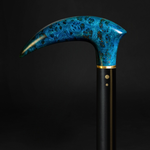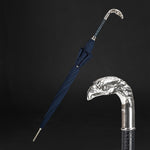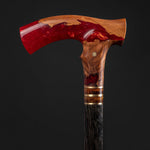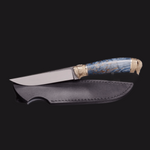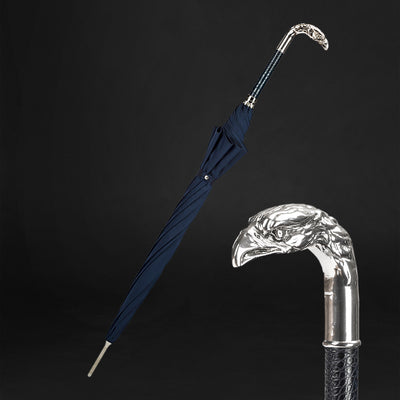You have no items in your shopping cart.
Recent Posts
-
Why an Elegant Cane Is a Thoughtful Gift for Loved Ones?
-
The Art of Christmas Design: Walking Canes That Celebrate the Season in Style
-
How an Ergonomic Walking Cane Handle Prevents Hand and Wrist Strain?
-
How to Walk With a Cane Correctly to Avoid Back or Shoulder Strain?
-
5 Common Mistakes People Make When Buying a Walking Cane (and How to Avoid Them)
-
How to Choose a Walking Cane That Reflects Your Personality (Not Just Your Needs)?
MOST POPULAR NOW
02
Jun
Must-know Information About The Best Walking Canes for Seniors
The best walking cane for seniors should meet three necessary criteria, namely:
• Durabilit
The cane should be firm and sturdy enough to withstand the weight of its adult user leaning heavily on it and to withstand thousands of impact on the ground.
It must last for a few years, even several years, before a replacement becomes necessary.
• Safety
The cane should have the essential safety features including but not limited to a good grip and handle.
It should be safe enough to use on many types of terrain, from smooth tiles to rough asphalt, without slipping and sliding on the surface.
Of course, the assumption here is that the user knows and adopts the safety measures in using a walking cane.
• Stability
The cane should be designed in such a way that it looks and feels stable on most terrain where seniors with walking issues are most likely to walk on.
In many cases, the cane can re-center itself and stand on its own. In others, the cane has a curved design so that its user’s weight rests directly over its tip.
If the cane has a beautiful design such that it looks like it is part of a personal style statement, then all the better!
a senior using a walking cane

Tips for Choosing Walking Canes
Keep in mind that walking canes are designed to provide support for people with difficulty in walking [3], whether the mobility issues are caused by an injury or an illness or a combination of both.
The first step then in choosing the best senior-friendly walking cane is determining the type and amount of support needed.
In this case, the kind of walking cane has a considerable influence on your choice.
Straight canes are the basic walking canes with a single point and with a shaft made of either wood or aluminum. These usually have either a rounded crook-type handle or an L-shaped handle.
Offset handle canes are similar to the straight canes but with a difference – these typically have a swan neck-shaped curved on the shaft’s upper part. The design then allows the user’s weight to rest directly over the tip of the cane for greater stability. These are made of aluminum so that the height can be adjusted.
Quad canes, which are also known as broad-based canes, have three or four separate tips at their base for maximum stability. These may also have offset flat handles for comfortable use, too.
The choice of these three main types of walking canes partly depends on the severity of your mobility issues.
If you only have a mild walking impairment, then the straight and offset handle canes will suffice for your needs.
But if you have more severe mobility issues, such as when you’re recovering from a stroke, then the quad canes are the best choices because of their higher support (i.e., broader base).
The grip on a walking cane for seniors is a matter of personal preference.
But comfort is key here since you will be holding on to the cane and manipulating it via its grip.
With the right grip, your joints will not be subjected to unnecessary stress and, thus, you can reduce the risk of joint deformities – and you don’t want more health issues aside from your mobility problems.
If you feel pain, numbness, or a tingling sensation in your hand that hasn’t been there before using the cane, then its grip isn’t the right fit for you.
Your physical therapist will be of assistance in choosing the right one for you.
In general, foam or molded rubber grips are the most comfortable but the size of the handle matters, too.
The tip also matters! Be sure to check that, indeed the cane’s rubber tip maintains a good grip on the floor or ground, primarily by verifying that the rubber is supple and its tread is in excellent condition.
Buy a replacement rubber tip when the old one looks worn.
Suffice it to say that in our walking canes for seniors review, we looked at the canes from their handle and shaft to their tip because your life and limb may well depend on it.
Even a 5-ounce difference in weight can add up when you’re lifting up your arms thousands of times in a single day.
Aluminum walking poles are better in this case although we have also seen people who prefer the heftier carbon fiber poles.
Tips on Checking Your Cane’s Fit
But even the best walking cane for the elderly can be dangerous when it isn’t properly fitted.
Check that your elbow is bent at a comfortable angle when you’re holding the cane in your hand; experts suggest a 15-degree angle as the best. You may slightly bend your elbow more in case the cane is used for balance.
Check that your wrist is at its proper height. Let your arm hang straight down by your side. Look at the top of the cane – it must be in alignment with the crease in your wrist for a proper fit.
Sources:
Also Purchased
-
Beige Walking Cane for Ladies Chamomile Flower, Wooden Walking Stick
Introducing our beautiful Beige Walking Cane for Ladies with Chamomile Flower, a Wooden Walking Stick that is hand carved and handmade, making it both pretty and unique. This walking cane...$90.00$79.50 -
Black Skull Head Walking Stick, Wedding Ceremony Designer Skull
Looking for a stylish and unique walking stick to elevate your look at your next event? Check out our Black Skull Head Walking Stick, the perfect accessory for any wedding...From $217.00 -
Exotic Burl Wood Walking Cane – Fashionable Artisan Stick
A sculptural statement in deep, oceanic blue — this walking cane is more than a support accessory, it's wearable art. Meticulously hand-shaped from stabilized burl wood, the handle evokes the...$425.00 -
ArtWalkingSticks™ MAGIC Walking Cane, Handmade - Make to Order
This piece of art is created for those who value details. We make one of a kind, handcrafted wood and resin canes. Our Wooden Canes are completely unmatched in creativity....$430.00 -
Umbrella with Eagle Handle, Fashion Umbrella For Men
Make a bold and fashionable statement with our Umbrella with Eagle Handle - a unique and functional accessory designed for men. The striking eagle handle is the highlight of this...$325.00 -
Fashionable Lion Shoehorn Long Handle, Pearly Brown Shaft, Handmade
Introducing our Fashionable Lion Shoehorn, a handcrafted, long-handled shoe horn with a pearly brown shaft that's both stylish and practical. The intricate Lion design adds a touch of elegance to...$240.00
















